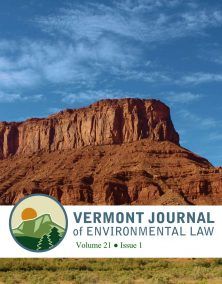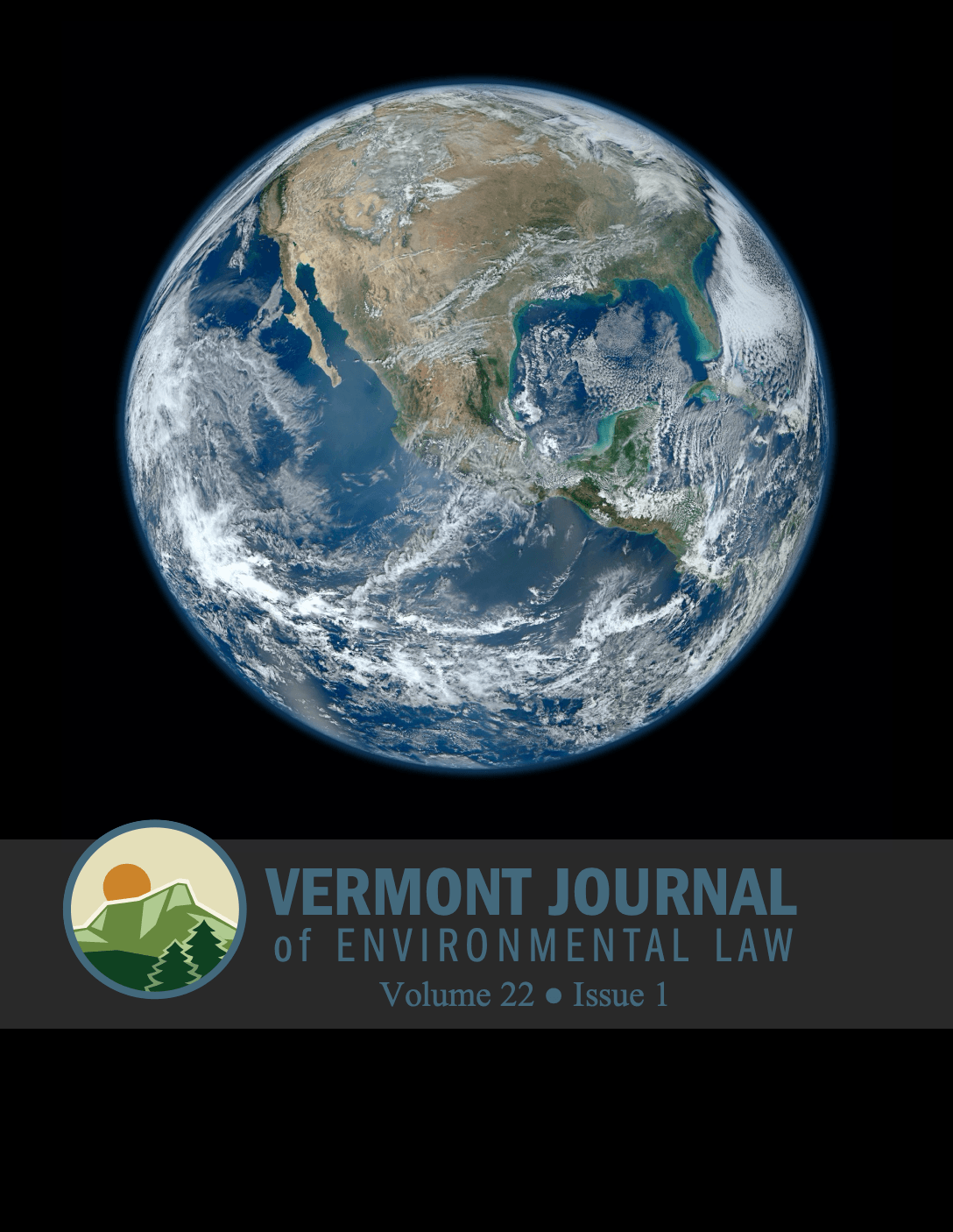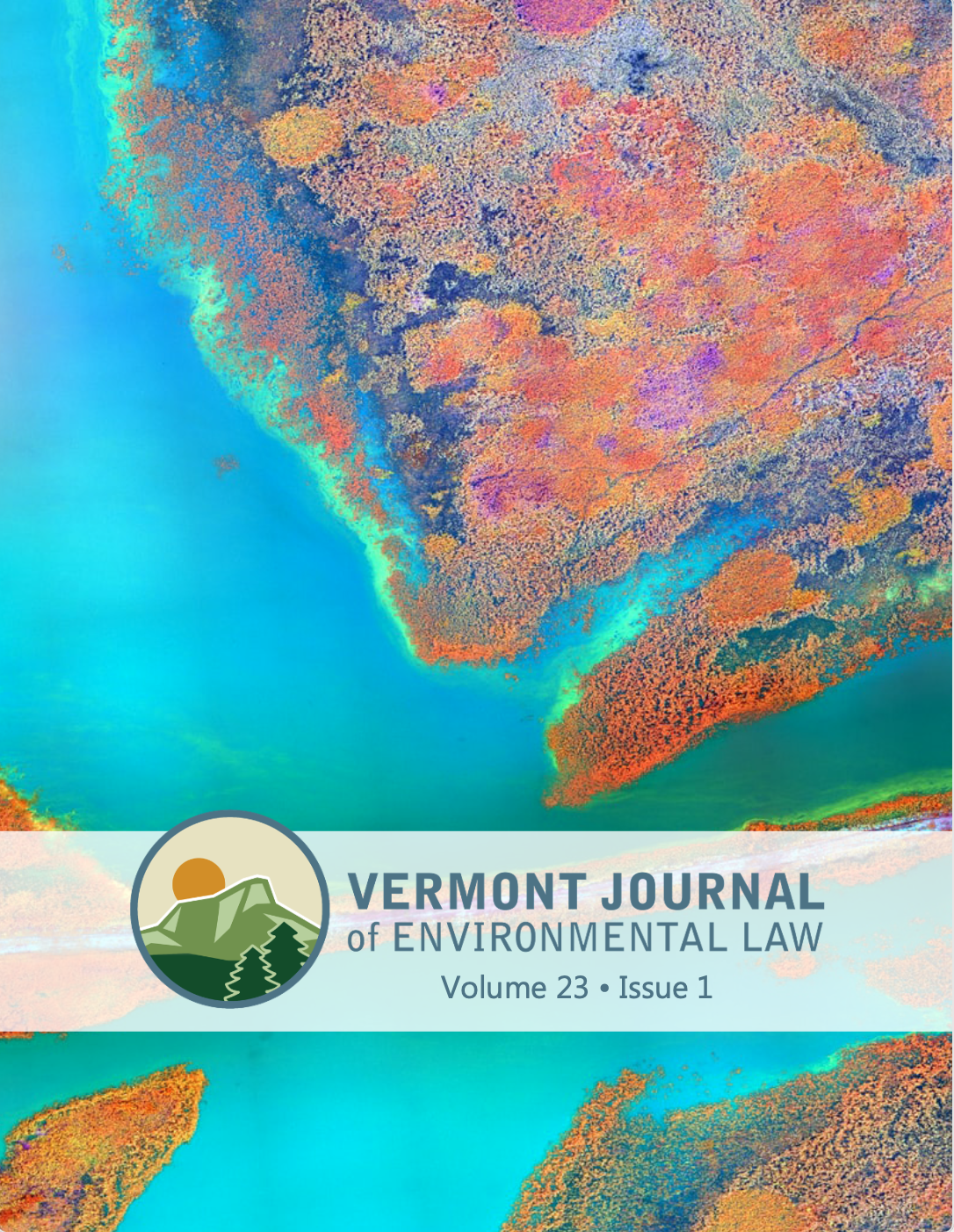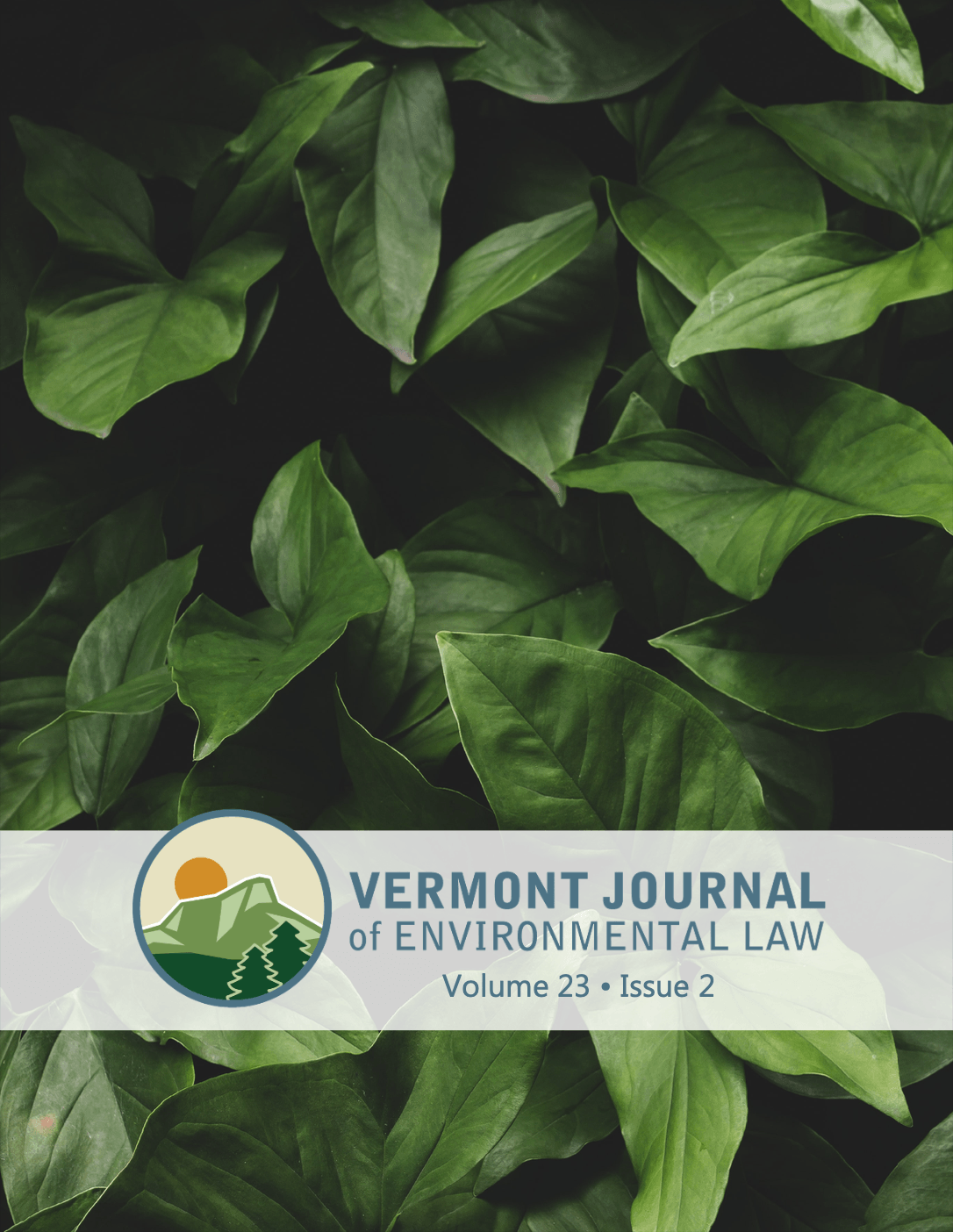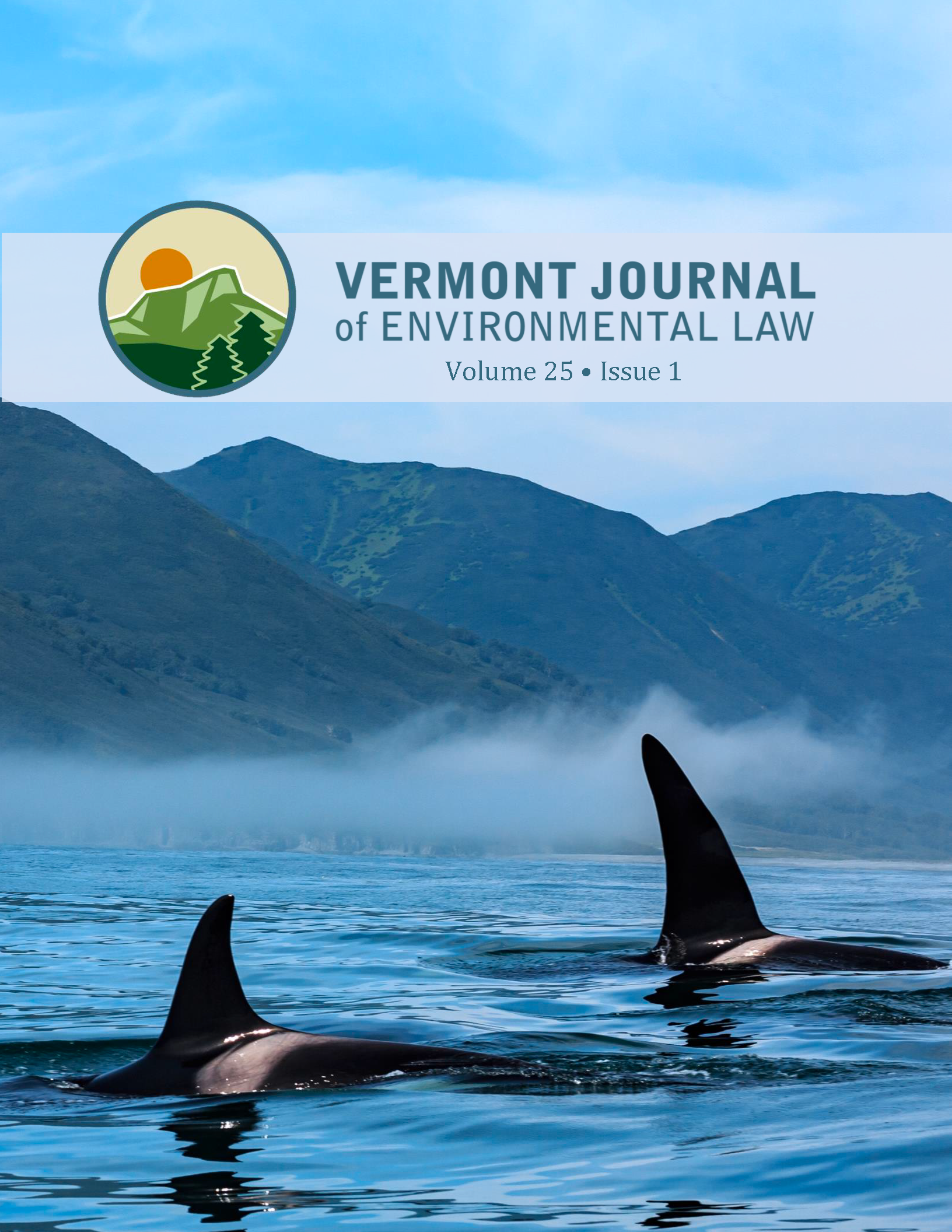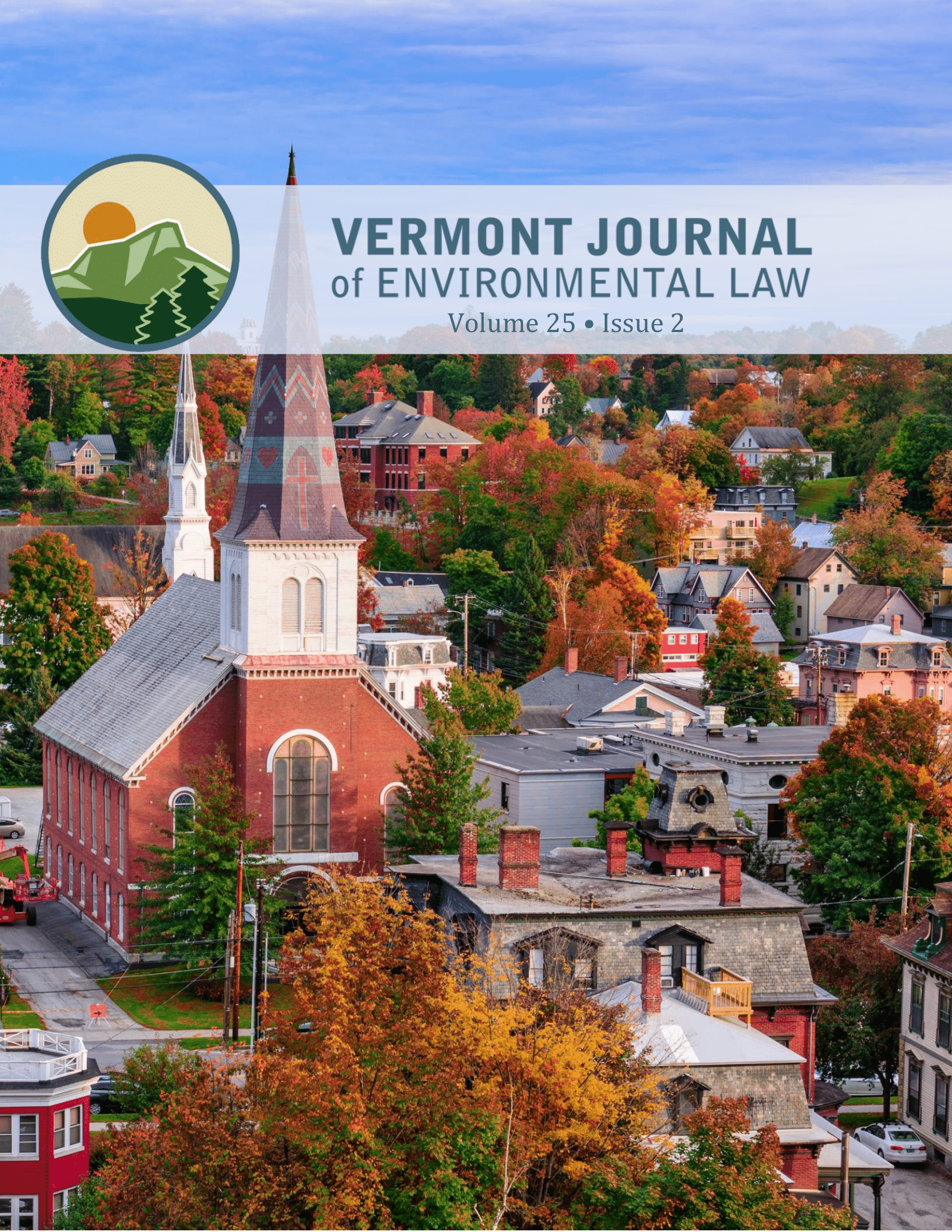This post is part of the Environmental Law Review Syndicate, a multi-school online forum run by student editors from the nation’s leading environmental law reviews.
__________________________________________
By Kelly Brantzi*
Introduction
The summer of 2017 set the West on fire, both physically and politically. By early September, the Western states had 65 fires burning at once.[1] As millions of acres burned—along with the U.S. Forest Service’s (USFS) budget—lawmakers gathered in Congress to create a “fire funding fix.”[2] Summer 2018 will likely be no different—even after the celebrated passage of the bipartisan 2018 Omnibus spending bill focused on new budget appropriations for wildfire suppression and prevention.[3] Argued here, the USFS’s budgeting problem represents only one straw in a dry, hot haystack.
In an opinion published in High Country News, retired former USFS Chief Dale Bosworth and retired former USFS National Director of Fire and Aviation Management Jerry T. Williams suggested that, without an investigation into the root-causes of wildfires, federal agencies will remain “bound to convention, [and] . . . left to suffer the next unimaginable disaster” like the wildfires of 2017.[4] The USFS does not have adequate legislation to address the full scope of contributory factors of wildfire—namely, national forests’ altered landscapes created by the mistake of allowing 100 years of fire suppression; wildfires exacerbated by unaccounted for climate change contributory factors; and the public’s apparent unwillingness to allow the USFS to correct its mistake by mitigating environmental harms in forests that depend on wildfire for healthy, sustainable ecosystems.[5] The Omnibus spending bill provides a start to this management paralysis. The USFS needs a “commission on wildfire” (Wildfire Commission) to find the roots of the problem.
Bosworth and Williams presented three strong arguments for the USFS’s inability to effectively manage wildfires. First, altered national forests created by naïve land management practices, such as “take-the-best-and-leave-the-rest-logging,” which created forests dependent on human action for wildfire prevention.[6] When the USFS suppressed fires, it suppressed the forests’ natural ability to reduce fuel loads, thin trees, and regenerate ecosystems through wildfire, it created a forest dependent on human action to remedy the environmental harms that resulted from that suppression.[7] Second, without a strong market for “small-diameter trees and deadfall” cut during wildfire prevention efforts that thin forest understory, the USFS cannot subsidize the woody biomass those mitigating cuts would create.[8] Third, fire suppression appropriations grossly outweigh those needed for wildfire mitigation.[9] The second argument could potentially cure the third: subsidizing wildfire mitigation by creating a market for woody biomass might help balance the budget.
This article uses legislative and historical perspectives to build upon Bosworth and Williams’s suggested solution to create a Wildfire Commission that investigates the fuller spectrum of causal and contributory factors of wildfire, to shift to a new paradigm that includes socio-economic costs, environmental impacts, and historical management of altered, fire-dependent forests.[10] The Wildfire Commission would allow Congress to create more effective legislation and inform the public that accountability for wildfires extends farther than the USFS.[11]
First, this article examines the costs of wildfire and Congress’s fire funding fix. Second, this article provides foundational legislative guidance for Congress to establish the Wildfire Commission using the extant annual reporting requirements within the Consolidated Appropriations Act of 2018[12] (Appropriations Act) and builds off questions addressed by the National Forest Commission of 1896–1897.[13] Finally, this article concludes that a full-scope investigation of contributory factors—if seen through a lens different from the economic-based paradigm that currently exists—elucidates the necessity for a new paradigm that includes socio-economic costs, environmental impacts, and historical management of altered, fire-dependent forests.
I. Background
A. The Costs of Wildfire and the “Fire Funding Fix”
After visiting several post-wildfire sites in late 2017,[14] the newly appointed U.S. Secretary of Agriculture Sonny Perdue (Secretary) called upon Congress to create a “fire funding fix.”[15] The Secretary sought legislation that would fix how the USDA receives and allocates funds to suppress wildfires in two ways: first, by establishing an emergency fund to fight existing fires; and second, by allocating more funding for preventative wildfire management practices that remove “fuel load[s]”[16] in national forests.[17] To reduce fuel loads, the Secretary sought to create a categorical exclusion for the USFS to clear “underbrush” under the National Environmental Policy Act (NEPA).[18]
Until the Appropriations Act, funding allocations for wildfire suppression and prevention were interdependent—during a fire, the USFS would “borrow” funds from a separate wildfire prevention fund.[19] Suppression costs rose to over 50% of the budget by 2017,[20] and wildfires’ severity and impacted acreages mirrored this increase, indicating that borrowing is increasingly untenable.[21] The USFS wildfire suppression costs alone reached a record $2 billion in 2017.[22] Without mitigation or better management, wildfires and socioeconomic costs will continue to increase and uncontrollable wildfires will continue to exceed expectations.[23]
B. The Consolidated Appropriations Act of 2018
On March 23, 2018, Congress passed and the President signed the Appropriations Act.[24] The Appropriations Act contains the Wildfire Suppression Funding and Forest Management Activities Act (Wildfire Suppression Act). The Wildfire Suppression Act directly addressed the Secretary’s call to Congress by creating a new eight-year funding structure, beginning in fiscal year 2020.[25] Under the new funding structure, the USDA and Department of the Interior (DOI) have an increased budget allowance of $2.25 billion that incrementally authorizes an additional $100 million each year over the following seven years.[26]
States and counties also benefit from The Appropriations Act.[27] Congress allocated approximately $200 million to rural counties using a two-year extension of the Secure Rural Schools and Self-Determination Act of 2000,[28] which provides funding for prevention, restoration, and stewardship projects to rural counties that contain federal land or are near national forests.[29] The Act also authorizes the DOI and USFS to purchase and acquire privately-held inholdings in areas such as “national parks, national wildlife refuges, [and] national forests.”[30]
C. Wildfire Costs Are Neither a Sole Budget Problem nor a Sole NEPA Problem
The Secretary’s plea to Congress assumes that this new funding structure and associated grants will allow the USFS will be able to fight fires more effectively.[31] However, the fire funding fix is limited in two notable ways: first, it only considers fire suppression; and second, it only creates a limited categorical exclusion under NEPA in forest management planning processes for areas less than 3,000 acres, authorized for “forest restoration treatments” in rural counties, or within the “wildland-urban interface” (WUI).[32] The latter’s categorical exclusion from NEPA[33] only applies to the limited acreage requirements of Wildfire Resilience Projects;[34] it still requires the USFS to prepare an impact statement and annual report that is “transparent and nonexclusive;”[35] and does not apply to “a component of the National Wilderness Preservation System,” National Monuments, “congressionally designated wilderness study area[s],” or areas inconsistent with previously enacted land and resource management plans under section 6 of the Forest and Rangeland Renewable Resources Planning Act of 1974.”[36]
The Wildfire Suppression Act authorizes funding and exemptions that reduce the time between authorization and implementation.[37] However, the Act does not address wildfire management, why wildfires have increased so dramatically, and whether they may be contained at all. The DOI and the USFS now need to consider what will happen in eight years when the funding fix expires. The USFS must focus more on regulating human actions in and around national forests, rather than trying to contain the possibly uncontainable—wildfire. A Wildfire Commission should be formed to provide an unbiased answer to these difficult questions.
II. Creating the Wildfire Commission
A. The Wildfire Commission Must Consider Climate Change Factors
Our current forest management structure remains at a “dangerous impasse.” [38] Scientists provide “strong evidence that regional warming and drying, including that directly attributed to anthropogenic climate change,” contributes to an increase in wildfires’ fire severity, frequency, and length. Climate change causes “increased frequency of heat waves,”[39] increased incidents of drought, and extended drought seasons,[40] all of which contribute to wildfire severity.[41] “[N]o environmental issue has captured the scientific community’s interest, the media’s eye, the public’s concern, and even the policymakers’ attention more than the climate change crisis.”[42] Yet, the USFS cannot control these contributory factors. Climate change has changed the world in ways most USFS land-management legislation failed to anticipate.[43] Unless Congress enacts legislation that authorizes the USFS to exercise their expertise in wildfire management, it will continue to fund a fight it cannot win, and the USFS will continue to be “hamstrung by convention.”[44]
A Wildfire Commission needs to investigate new legislation to mitigate an extended and increased wildfire season’s economic and socio-economic costs, and it must incorporate contributing factors associated with altered forests’ health. The increase in wildfires, when compounded by rising global temperatures, requires a shift from the economy-based paradigm read into the USFS’s enabling act[45] to an anthropogenic-based paradigm for analyzing and managing wildfire. [46]
B. The Wildfire Suppression Funding and Forest Management Activities Act of 2018
Appropriations Act amendments provide an apt model for an investigatory Wildfire Commission. The Wildfire Suppression Act requires the Secretary of the DOI or USFS to consult with the Director of the Office of Management and Budget (OMB) to prepare an annual report if either Agency withdraws emergency funds for wildfire suppression in the prior fiscal year.[47] The report only applies to funds taken by either Agency for emergency funds, not funds already appropriated to the USFS. The annual report requires that the Secretary of the DOI or USFS:
(1) document obligations and outlays of the additional new budget authority for wildfire suppression operations;
(2) identify risk-based factors that influenced management decisions with respect to wildfire suppression operations;
(3) analyze a statistically significant sample of large fires, including an analysis for each fire of—
(A) cost drivers;
(B) the effectiveness of risk management techniques and whether fire operations strategy tracked the risk assessment;
(C) any resulting ecological or other benefits to the landscape;
(D) the impact of investments in wildfire suppression operations preparedness;
(E) effectiveness of wildfire suppression operations, including an analysis of resources lost versus dollars invested;
(F) effectiveness of any fuel treatments on fire behavior and suppression expenditures;
(G) levels of exposure experienced by firefighters;
(H) suggested corrective actions; and
(I) any other factors the Secretary of the Interior or Secretary of Agriculture (as applicable) determines to be appropriate;
(4) include an accounting of overall fire management and
spending by the Department of the Interior or the Department of Agriculture, which shall be analyzed by fire size, cost, regional location, and other factors;
(5) describe any lessons learned in the conduct of wildfire suppression operations; and
(6) include any other elements that the Secretary of the Interior or the Secretary of Agriculture (as applicable) determines to be necessary.[48]
The Wildfire Suppression Act forms a good basis for the Wildfire Commission to begin their investigations.[49] Notably, the Wildfire Suppression Act’s requisite report leaves out factors outside an agency’s control such as climate change-induced weather that impacts fuel types within historically fire-suppressed forests. Thus, the reports primarily focus on whether the wildfires were appropriately budgeted and timely handled during a wildfire emergency. The Wildfire Commission could close this gap.
The Wildfire Commission’s investigation should utilize the Wildfire Suppression Act’s list of factors but focus more on broader, external factors, such as:
(1) whether the wildfire risks were appropriately and effectively tracked considering weather conditions;
(2) how weather contributed to the fire’s path and strength;
(3) whether humans or natural causes ignited the fire and where they started;
(4)any ecological benefits or environmental harms existing post-fire,[50] including levels of harmful exposure to community and firefighters (e.g., air and water pollution and at what levels), which could be compared to baseline documentation from previous years; and
(5) whether policies altering the forest floor by removing “fuel loads” mitigates the wildfire’s impacts versus abstention from removal or intervention.[51]
These findings may shift some accountability away from the USFS and allow Congress to look beyond the suppression appropriations and limited prevention exceptions, encouraging more apt legislation that considers these contributory factors. Legislation could include restricting access to national forests on high-risk days;[52] implementing development restrictions within the WUI by acquiring property rights or working with land trust organizations to place conservation easements in high-risk areas;[53] or providing a cost-benefit analysis of pre-wildfire and post-wildfire health impacts, loss of homes and property, and loss of human, plant, and animal species to encourage laws that allow for more underbrush removal by prescribed fire or mechanical means within high-risk areas.
III. Legislative and Anthropogenic Considerations
A. A Foundational Commission Example: The National Forest Commission of 1896–1897
Congress established the National Forest Commission in 1896 to determine how the public forest reserves should be managed as a “national forest system.”[54] Hoke Smith, the Secretary of the Interior in 1896,[55] asked the president of the National Academy of Sciences, Wolcott Gibbs, to have the National Forest Commission focus on answering three specific questions:
(1) Should forest lands dedicated to timber growth be protected from fire?
(2) Ecologically, how important is conservation?
(3) What legislation should be passed?[56]
The answers became part of the Administrative Organic Act of 1897 (Organic Act): “[n]o national forest shall be established, except to improve and protect the forest within the boundaries, or for the purpose of securing favorable conditions of water flows, and to furnish a continuous supply of timber for the use and necessities of citizens. . . .”[57]
The Wildfire Commission could base its investigations on clauses from the Organic Act. It could investigate water quality, water diversion, nearby agricultural farming practices, and the effects of “uncontrolled residential development” near or the WUI[58] that may contribute to drought conditions. Secretary Smith’s focus on ecology counsels a revisit to those considerations. Additionally, the Organic Act suggests investigating market resources for underbrush cleared during wildfire prevention.
Under these considerations the Wildfire Commission may find reason to restrict property development and water diversion to the WUI, or at least require high fire-prevention standards for their properties. In addition, it may address accountability factors that influence homeowners’ expectations regarding the USFS’s role in fighting deadly wildfires that threaten their homes. Finally, the Wildfire Commission may consider decreased air quality brought on by wildfires versus prescribed burns near their homes.[59]
B. Anthropogenic Factors: Investigating Smaller Scales of Prescribed-Fire Management and Altered Forest Comparisons
The Wildfire Commission could gain a broader perspective on wildfire management by investigating indigenous cultures’ agricultural practices. The Wildfire Commission should investigate work that the USFS performs with Native American tribes and other countries and cultures, including in places where higher average temperatures could prove useful models.[60] Specifically, the Wildfire Commission should consider altitude and forest-types when analyzing fuel loads. Variances in vegetation are critical because, of “the three elements that influence fire behavior-weather, topography, and fuels[, fuels are] the only element that can be manipulated.”[61]
The USFS has historically collaborated with Native American tribes to help combat forest fires resulting from droughts brought on by climate change.[62] In the West, scientists, foresters, and tribes have developed collaborative approaches to utilize “tribal traditional ecological knowledge” (TEK) to improve forest management and wildfire prevention.[63] Scientists recognize that TEK, a combination of “contemporary tribal/indigenous people’s [oral history or ethnographic information] about climate and fire regimes,” creates core knowledge for successful land management.[64]
The USFS’s work with Aborigines in Northern Australia provides a template for how the Wildfire Commission should quantify fuel types and help predict fire behavior, create physical models of fuel types, and suggest a universal standard for fuel assessments.[65] A report by scientists working with northern Australian Aborigines provides an apt overview of why the Wildfire Commission should investigate fuel assessment practices and differences between altered and unaltered forest types:
As combustion is a fundamental process, the same relationships between fuel and fire behaviour occur universally. Consequently, there is potential for developing novel fuel assessment methods that are more broadly applicable and allow fire research to be leveraged worldwide. Such a movement would require broad cooperation between researchers and would most likely necessitate a focus on universal properties of fuel. However, to truly understand fuel dynamics, the complex biotic nature of fuel would also need to remain a consideration—particularly when looking to understand the effects of altered fire regimes or changing climate.[66]
The benefits of the USFS’s work with TEK establishes a reason to investigate different scale models.[67] In investigating these practices, the Wildfire Commission should expand this scope to compare and contrast the agricultural practices of other indigenous cultures. It may be important to note that most indigenous cultures’ agricultural practices are unlike the industrialized, mono-type agricultural practices in the states.[68] The Commission should investigate the differences in agricultural practices, including water resources and diversion schemes, fire-retardants and pesticide effects on soil types, and water run-off of these chemicals in areas close to, or within, national forests.
Conclusion
The Wildfire Suppression Act provides the perfect impetus for Congress to create a Wildfire Commission. Congress should establish a Wildfire Commission to perform investigations that include: (1) examining broader geographic areas and forest types and considering their altered state; (2) performing environmental quality comparisons between prescribed burns and wildfire impacts to consider adjustments to state and federal environmental limitations on prescribed burns;[69] (3) adopting indigenous people’s agricultural management practices in warmer climates; (4) developing climate change models that include temperature inflations and fluctuations, weather patterns, and drought cycles; and (5) considering population migration patterns and proximity to forests to form incentives to leave the WUI and allow for an increase in prescribed burns or forest thinning practices, or—at minimum—encourage an uptake in public accountability.
The Organic Act’s legislative history provides guidance on base models of USFS wildfire policy. Expanding on questions to be addressed in annual reports on emergency funds under the Wildfire Suppression Act may return findings that suppression and prevention efforts still cannot combat climate change effects.[70] Knowledge regarding fuel types and variations between altered and unaltered forests will help predict ignition causes, whether the USFS can control wildfires in certain areas if the risk of socioeconomic harms are too high to justify suppression. If the USFS is unable to control the intensity of predicted fires, legislation may be needed to restrict further alterations and human activities within certain high-risk areas. Studies on the “long-term health and sustainability of wilderness areas” performed by previous foresters and scientists could also offer solutions for creative wildfire management and when to allow forests to burn.[71] That way, nature could possibly pick up the tab on at least part of the federal budget allotted towards wildfire suppression.
In conclusion, the root-causes of wildfire management have still yet to be addressed even with the enactment of the Wildfire Suppression Act.[72] The problem is “not the way we fight wildfires in the West. . . . The problem is the way we manage our fire-dependent forests.”[73]
*Kelly Brantzi is a 3L at Vermont Law School where she is a Managing Editor on the Vermont Journal of Environmental Law. Kelly wishes to express sincere thanks to the Executive Board of VJEL for their superior editing skills; Dale Bosworth, Orville Daniels, and Olleke Rappe-Daniels for their invaluable and unique perspectives on forest management and wildfires; Al Sample for continually sparking my educational curiosity; and special thanks to Dale Bosworth and Jerry Williams for providing the inspiration and impetus to write this article.
[1] Tom Di Liberto, Massive Fires Burning Across the West in September 2017, Climate.gov (Sept. 7, 2017), https://www.climate.gov/news-features/event-tracker/massive-fires-burning-across-west-september-2017.
[2] Press Release, U.S. Dep’t of Agric., Secretary Perdue Applauds Fire Funding Fix in Omnibus (Mar. 23, 2018), https://www.usda.gov/media/press-releases/2018/03/23/secretary-perdue-applauds-fire-funding-fix-omnibus [hereinafter Perdue Applauds Omnibus] (tagging the budget appropriations in the omnibus bill as “the fire funding fix”).
[3] Consolidated Appropriations Act, Pub. L. No. 115-141, div. O, §§ 102, 605 (Mar. 23, 2018) [hereinafter Appropriations Act] (amending the Balanced Budget and Emergency Deficit Control Act of 1985, 2 U.S.C. 901(b)(2) (2012), and the Healthy Forests Restoration Act of 2003, 16 U.S.C. § 6511(2)).
[4] Dale Bosworth & Jerry T. Williams, We Need a Commission to Take Action on Wildfire in the West, High Country News (Nov. 30, 2017), https://www.hcn.org/articles/opinion-we-need-a-commission-to-take-action-on-wildfire-in-the-west; see also Robert B. Keiter, The Law of Fire: Reshaping Public Land Policy in an Era of Ecology and Litigation, 36 Envtl. L. 301, 310–12 (2006) (detailing lives lost during wildfires that occurred in the last decade).
[5] Jamison Colburn, The Fire Next Time: Land Use Planning in the Wildland/Urban Interface, 28 J. Land Res. & Envtl. L. 223, 225–227 (2008).
[6] Bosworth & Williams, supra note 4.
[7] Diane Smith, From Research to Policy, The White Cap Wilderness Fire Study, Forest history today, Spring/Fall 2014, at 4, 6.
[8] U.S. Dep’t of Agric., Forest Serv., RMRS-GTR-149, Strategic Assessment of Forest Biomass and Fuel Reduction Treatments in Western States, 8–12 (2005) (describing the potential of merchantable timber potentially generated from trees less than 10 inches diameter left behind during fuel reduction treatments).
[9] Bosworth & Williams, supra note 4.
[10] Id.; see also Thomas J. Duff et al., Revisiting Wildland Fire Fuel Quantification Methods: The Challenge of Understanding a Dynamic, Biotic Entity, Forests, Sept. 2017, at 351, 351 (“Fire behaviour is the product of the weather, topography, human intervention and, importantly, the fuel properties at the time a fire occurs.”).
[11] Bosworth & Williams, supra note 4.
[12] Appropriations Act, Pub. L. No. 115-141, div. O, § 104 (Mar. 23, 2018) (amending the Balanced Budget and Emergency Deficit Control Act of 1985, 2 U.S.C. 901(b)(2)(F)(i)).
[13] Williams & Miller, At the Creation: The National Forest Commission of 1896–97, Forest History Today, Spring/Fall 2005, at 32, 32–34.
[14] Perdue Applauds Omnibus, supra note 2 (detailing the Secretary’s visits to regions impacted by wildfires).
[15] See Dino Grandoni, The Energy 202: Hurricanes Are Dominating the News. But Forest Fires Are Raging out West., Wash. Post (Sept. 20, 2017), https://www.washingtonpost.com/news/powerpost/paloma/the-energy-202/2017/09/20/the-energy-202-congress-want-to-fix-firefighting-in-federal-forests-but-it-can-t-agree-on-how/59c1616530fb045176650d47/?utm_term=.954136dce369 (quoting USFS spokeswoman Babete Anderson, who stated that “[t]he Forest Service is working with the Administration and Congress on a fire funding fix,” and reporting an increase of “about 2.5 million more acres [of burn] than in an average year”).
[16] See Forest Service Manual, ch. 5105, Hazardous Fuels Management and Prescribed Fire, Amend. No. 5100-2014-3 (2014) (defining “fuel as combustible wildland vegetative materials, living or dead”).
[17] Press Release, U.S. Dep’t of Agric., Perdue Calls on Congress to Fix Forest Service Fire Funding Problem (Sept. 8, 2017), https://www.usda.gov/media/press-releases/2017/09/08/perdue-calls-congress-fix-forest-service-fire-funding-problem.
[18] Id.; 40 C.F.R. § 1508.4 (2017); see also Appropriations Act, Pub. L. No. 115-141, div. O, § 605 (Mar. 23, 2018) (amending Healthy Forests Restoration Act of 2003, 16 U.S.C. 6511(2)).
[19] Press Release, U.S. Dep’t of Agric., Forest Service Wildland Fire Suppression Costs Exceed $2 Billion (Sept. 14, 2017), https://www.usda.gov/media/press-releases/2017/09/14/forest-service-wildland-fire-suppression-costs-exceed-2-billion.
[20] Press Release, U.S. Dep’t of Agric., supra note 23; see also USDA Forest Service, Fiscal Year 2017 Budget Overview 3 (2016).
[21] Perdue Applauds Omnibus, supra note 2.
[22] Laura Zuckerman, Cost of Fighting U.S. Wildfires Topped $2 Billion in 2017, Reuters (Sept. 14, 2017, 8:27 PM), https://www.reuters.com/article/us-usa-wildfires/cost-of-fighting-u-s-wildfires-topped-2-billion-in-2017-idUSKCN1BQ01F. These costs do not take into account the socioeconomic costs such as lost lives and homes or claims against the federal government for property damage or negligence. See Keiter, supra note 4, at 350–59 (discussing socioeconomic policy and litigation costs).
[23] See Bosworth & Williams, supra note 4 (“If the aim is to protect life and property, and to minimize natural resource damage at the lowest possible cost, then [the USFS is] headed down the wrong trail.”).
[24] Appropriations Act, Pub. L. No. 115-141, div. O, §§ 102, 104, 605 (Mar. 23, 2018) (amending the Balanced Budget and Emergency Deficit Control Act of 1985, 2 U.S.C. 901(b)(2) (2012), and the Healthy Forests Restoration Act of 2003, 16 U.S.C. § 6511).
[25] Perdue Applauds Omnibus, supra note 2; Cost of Fire Operations, U.S. Forest Serv., https://www.fs.fed.us/about-agency/budget-performance/cost-fire-operations (last visited Apr. 12, 2018); see Appropriations Act § 102 (defining “wildfire suppression operations” as “the emergency and unpredictable aspects of wildland firefighting, including . . . support, response, and emergency stabilization activities; other emergency management activities; and the funds necessary to repay any transfers needed for the costs of wildfire suppression operations”).
[26] Cost of Fire Operations, supra note 25; see also Appropriations Act §§ 102, 104 (amending 5 U.S.C. § 401(a)) (detailing the USFS’s appropriated emergency allowance under section 102 and the USFS authority under section 605 for prevention measures).
[27] NACo Legislative Brief: Highlights of the FY 2018 Omnibus Federal Spending Package for Counties, NACo (Mar. 23, 2018), http://www.naco.org/featured-resources/highlights-fy-2018-omnibus-federal-spending-package-counties.
[28] Cost of Fire Operations, supra note 26.
[29] Secure Rural Schools Reauthorization, U.S. Dep’t Agric., forest serv. (Mar. 28, 2018), https://www.fs.usda.gov/pts/; Secure Rural Schools, Wilderness soc’y, https://wilderness.org/article/secure-rural-schools (last visited Apr. 12, 2018).
[30] Cost of Fire Operations, supra note 26.
[31] Perdue Applauds Omnibus, supra note 2.
[32] See Appropriations Act § 102 (defining terms in new section 605, Wildfire Resilience Projects, for “hazardous fuel reduction projects, as defined in the Healthy Forests Restoration Act of 2003,” 16 U.S.C. § 6511(2), to be considered “an action categorically excluded from the requirements of [NEPA],” 42 U.S.C. § 4321–4370m-12); 36 C.F.R. § 220.6 (2017).
[33] National Environmental Policy Act, 42 U.S.C. § 4321–4370m-12.
[34] Appropriations Act §§ 201, 202, 605 (defining terms in new section 605, Wildfire Resilience Projects, for “hazardous fuel reduction projects, as defined in the Healthy Forests Restoration Act of 2003,” 16 U.S.C. § 6511(2), to be considered “an action categorically excluded from the requirements of [NEPA]”).
[35] Id. § 605 (establishing that Wildfire Resilience Projects for reducing hazardous fuels shall be “transparent and nonexclusive” under 16 U.S.C. § 1611(2)(a)–(b)).
[36] Id. § 202 (amending 16 U.S.C. § 6511).
[37] See id. § 208 (removing the requirement for additional consultation in the Forest Rangeland Renewable Resources Planning Act, 16 U.S.C. 1604(d)).
[38] Bosworth & Williams, supra note 4; see paradigm, American Heritage Dictionary of the English Language (5th ed. 2016) (“A set of assumptions, concepts, values, and practices that constitutes a way of viewing reality for the community that shares them, especially in an intellectual discipline.”).
[39] Jennifer K. Balch et al., Human-Started Wildfires Expand the Fire Niche Across the United States, 114 Proc. Nat’l Acad. Sci. 2946, 2946 (2017).
[40] Id.
[41] Bosworth & Williams, supra note 4; see also Frank K. Lake, Trails, Fires, and Tribulations: Tribal Resource Management and Research Issues in Northern California, 5 Occasion 1, 14 (2013) (arguing that national wildfire policies should consider climate change).
[42] Mary Jane Angelo, Corn, Carbon and Conservation: Rethinking U.S. Agricultural Policy in a Changing Global Environment, 17 Geo. Mason L. Rev. 593, 599 (2010); see also Climatic Variability Report, supra note 7, at 111 (acknowledging the future changes and threats to forests due to climate change).
[43] Bosworth & Williams, supra note 4.
[44] Bosworth & Williams, supra note 4 (arguing for a Wildfire Commission based on an analogy to the 9/11 Commission’s finding that the “system . . . was hamstrung by convention”).
[45] Administrative Organic Act of 1897, 6 U.S.C. §§ 473–478, 479–482, 455 (2012).
[46] Bosworth & Williams, supra note 4.
[47] Appropriations Act, Pub. L. No. 115-141, div. O, § 102 (Mar. 23, 2018) (amending the Balanced Budget and Emergency Deficit Control Act of 1985, 2 U.S.C. § 901(b)(3)(F)(i)).
[48] Id. § 104.
[49] Economic factors should not be considered by the Commission; the Wildfire Suppression Act already requires an economic analysis. See id. § 104 (requiring a report that considers “cost drivers”).
[50] Robert L. Beschta et al., Postfire Management on Forested Public Lands of the Western United States, 18 Conservation Biology 957, 959 (2004).
[51] Lake, supra note 41, at 4 (“Tribal TEK may . . . describe how climate and weather influence fire behavior, from the yearly to decadal scale, with generalized understanding of century-scale climate and fire regime changes.”)
[52] See Balch et al., supra note 3, at 2946 (pointing to a survey, which covered roughly two decades of U.S. wildfire research and reviewed over 1.5 million government records, that reported that humans had caused over 84% of wildfires).
[53] V.C. Radeloff et al., The Wildland-Urban Interface in the United States, 15 Ecological Applications 799, 802 (2005) (“The wildland-urban interface (WUI) is the area where houses meet or intermingle with undeveloped wildland vegetation.”).
[54] Id.
[55] In 1896, forest reserves—what are now called national forests—were under the management of the DOI. See Williams & Miller, supra note 18, at 33 (discussing the amendments that shifted the management of forest reserves from the DOI to a newly formed Forest Service).
[56] Id. at 32–33.
[57] 16 U.S.C. § 475 (2012).
[58] Radeloff et al., supra note 53, at 802.
[59] Keiter, supra note 4, at 310–12.
[60] See Climatic Variability Report, supra note 7, at 10 (providing temperature increase projections).
[61] Appendix E – Fuel Model Definitions/Process, U.S. Forest Serv., https://www.fs.usda.gov/Internet/FSE_DOCUMENTS/stelprdb5109750.pdf (last visited Apr. 12, 2018).
[62] See, e.g., Lake, supra note 41, at 15 (outlining the collaborative effort to fight the Orleans Complex-Somes fires in 2006).
[63] Id. at 4.
[64] Id.
[65] Duff et al., supra note 10, at 353; Christine Eriksen & Don L. Hankins, The Rentention, Revival, and Subjugation of Indigenous Fire Knowledge Through Agency Fire Fighting in Eastern Australia and California, 27 Soc’y Nat. Res. 1288, 1296 (2014).
[66] Id. at 351.
[67] Lake, supra note 41, at 14–15 (discussing scaled approaches to determine how anthropogenic factors could be used for modeling hazardous fuel reduction treatments).
[68] See Laurie Ristino & Gabriela Steier, Losing Ground: A Clarion Call for Farm Bill Reform to Ensure a Food Secure Future, 42 Colum. J. Envtl. L. 59, 84–88 (2016) (outlining the industrialization of American agriculture).
[69] Smith, supra note 7, at 6.
[70] See Climatic Variability Report, supra note 7, at 10–11, 37 (providing temperature increase and wildfire severity projections).
[71] Smith, supra note 7, at 4.
[72] Bosworth & Williams, supra note 4.
[73] Bosworth & Williams, supra note 4; see also Beschta et al., supra note 50, at 959 (“The biota of [postfire] landscapes is adapted to, and often dependent upon, the occurrence of fires having highly variable frequency (return interval), season of occurrence, size, severity, and ecological effect.”).


